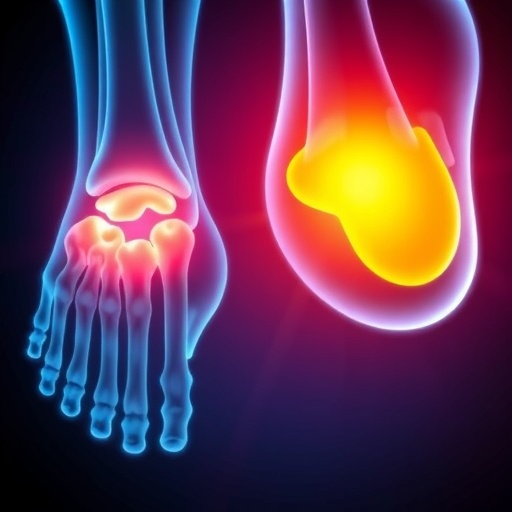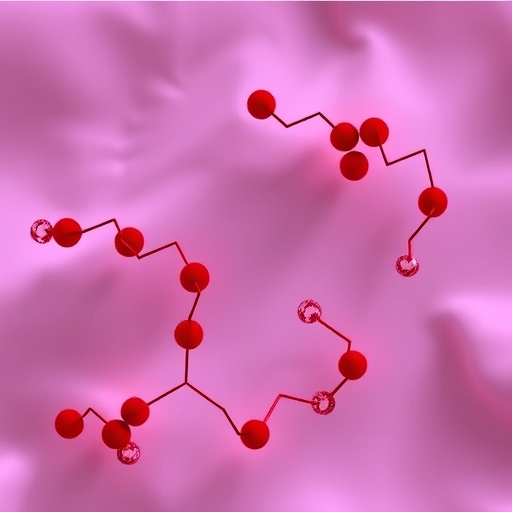Recent research in the field of orthopedic medicine has unveiled significant advancements in non-surgical methods for managing delayed union and nonunion in long bone fractures of the extremities. This topic is crucial for both clinical practitioners and patients alike, as the implications of these findings could transform rehabilitation practices and improve quality of life for individuals suffering from these challenging conditions. The study, led by Zhang, R., Cai, Q., and Ma, J., delves into the mechanisms, efficacy, and patient outcomes associated with these innovative approaches.
Fractures of the long bones in the extremities can often result in delayed union or, more critically, nonunion, where healing fails to occur within the expected timeframe. These complications pose substantial clinical challenges, including extended pain, loss of function, and increased healthcare costs. It is essential to explore the various factors that contribute to such complications, including biomechanical stability, blood supply, and underlying health conditions that might inhibit the natural healing process.
Traditional surgical interventions have been the standard approach for addressing nonunion fractures; however, the associated risks and recovery times present significant drawbacks. This has led researchers and clinicians to investigate non-surgical alternatives that can stimulate healing without invasive procedures. Innovative therapies such as biological agents, physical stimulation techniques, and advanced imaging technologies are at the forefront of this evolving landscape.
One promising area of research involves the application of biological therapies aimed at enhancing the body’s natural healing capabilities. Growth factors, scaffolds, and stem cell therapy have shown potential in pre-clinical and clinical studies to encourage osteogenesis and improve fracture healing rates. The rationale behind these therapies lies in their ability to promote cellular activities necessary for bone repair, enhancing the local microenvironment and promoting vascularization—key elements in the healing process.
In conjunction with biological therapies, physical stimulation techniques such as electrical stimulation and ultrasound have also gained traction. These methods encourage cellular activity and can lead to improved healing outcomes. Research indicates that both low-intensity pulsed ultrasound and electrical bone growth stimulators yield favorable results in cases of delayed union or nonunion. Not only do they provide a non-invasive option, but they also demonstrate a quicker recovery time compared to traditional surgical approaches.
Moreover, advancements in imaging techniques are playing a crucial role in the management of nonunions. High-resolution imaging can facilitate better evaluation of fracture healing, allowing for more tailored treatment plans. For example, the use of advanced MRI and CT imaging can provide insights into the biological processes occurring at the fracture site, informing the selection of appropriate therapeutic measures.
Patient-specific factors must also be considered when evaluating non-surgical treatment options. Variables such as age, comorbidities, and lifestyle choices can significantly impact healing. For instance, patients with diabetes or osteoporosis face a higher risk of complication. Consequently, a multidisciplinary approach that includes orthopedic surgeons, physical therapists, and rehabilitation specialists is paramount to address these complexities effectively.
Emerging research also suggests that optimizing nutrient intake and physical activity plays a key role in promoting bone healing. Nutritional supplementation of vitamins and minerals such as Vitamin D and calcium has been shown to contribute positively to fracture repair, laying the groundwork for non-surgical management strategies that emphasize holistic care. This approach nurtures the body’s intrinsic healing mechanisms while minimizing complications associated with surgery.
The implications of these advancements cannot be overstated. Improved rehabilitation practices based on current research could lead to shorter recovery times, enhanced patient satisfaction, and ultimately, better functional outcomes. The integration of non-surgical strategies into routine care for delayed union and nonunion will not only benefit individual patients but will also alleviate the financial burden on healthcare systems.
However, while the promise of these non-surgical approaches is significant, further research is necessary to refine these treatments and establish standardized protocols. Randomized controlled trials with larger patient populations will be essential to validate the efficacy of various non-surgical treatments. Additionally, long-term studies will be required to assess the durability of outcomes achieved through these novel methods.
Patients must be informed of the available non-surgical options as part of their treatment plan. Educating those with long bone fractures about the efficacy and safety of different therapies empowers them to take an active role in their recovery. Collaboration between healthcare providers and patients is crucial to ensuring the best possible outcomes in managing delayed union and nonunion fractures.
In conclusion, the journey toward overcoming delayed union and nonunion in long bone fractures is being transformed by the exploration of non-surgical approaches. With the continuous evolution of medical research and technology, the future appears promising for safer, effective, and less invasive treatment options. The findings from Zhang, R., Cai, Q., and Ma, J. serve as a valuable resource that paves the way for further developments in this vital area of orthopedic care. By harnessing the body’s own healing capabilities and integrating innovative techniques, we can look forward to a future where patients can achieve optimal recovery with minimal intervention.
Subject of Research: Non-surgical approaches for the management of delayed union and nonunion in long bone fractures of the extremities.
Article Title: Recent Advancements in Non-surgical Approaches for the Management of Delayed Union and Nonunion in Long Bone Fractures of the Extremities: A Review.
Article References: Zhang, R., Cai, Q., Ma, J. et al. Recent Advancements in Non-surgical Approaches for the Management of Delayed Union and Nonunion in Long Bone Fractures of the Extremities: A Review. Adv Ther (2025). https://doi.org/10.1007/s12325-025-03423-0
Image Credits: AI Generated
DOI: https://doi.org/10.1007/s12325-025-03423-0
Keywords: Non-surgical treatment, delayed union, nonunion, long bone fractures, orthopedic medicine, biological therapies, electrical stimulation, ultrasound therapy, patient outcomes.
Tags: biological agents for fracture healingclinical implications of non-surgical therapiesdelayed union treatment methodsenhancing bone repair without surgeryinnovative rehabilitation practiceslong bone fracture complicationsminimizing surgical risks in orthopedicsnon-surgical bone healing solutionsnonunion fracture managementorthopedic medicine advancementspatient outcomes in bone healing





